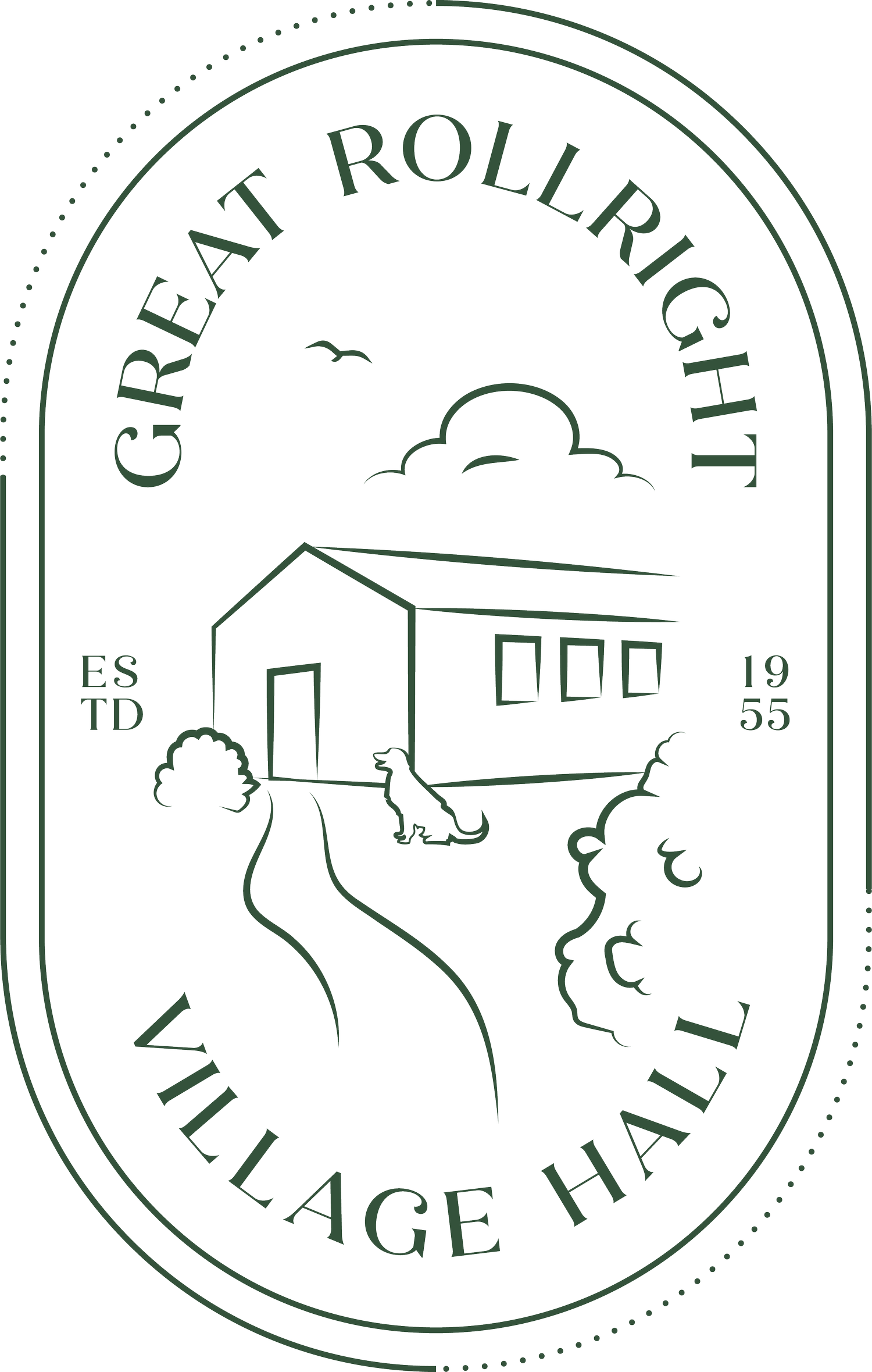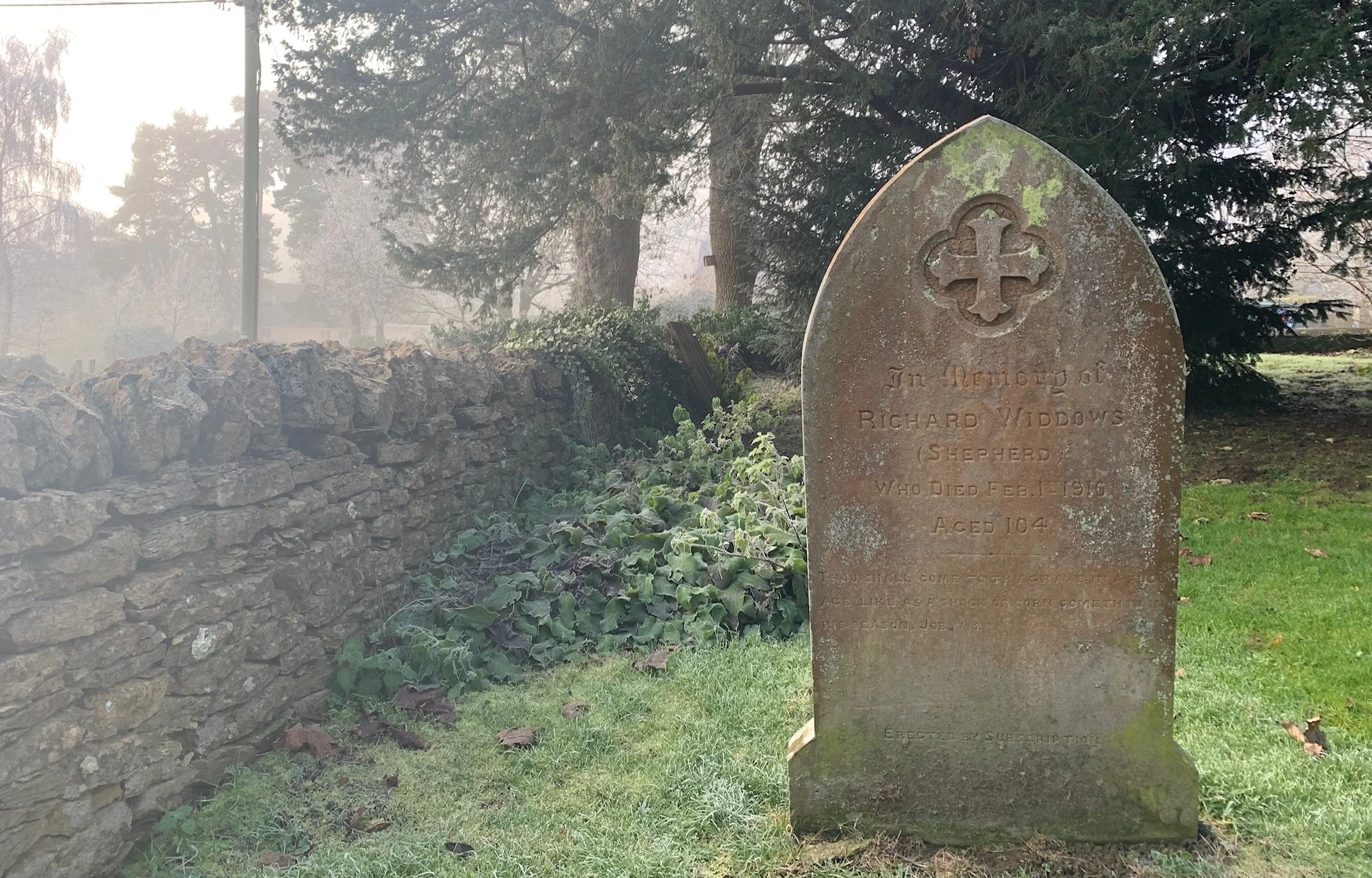Shepherd’s Stone
A fascinating life story of a centenarian shepherd lies behind a headstone in the churchyard at Great Rollright .
by Helen Castle
Richard Widdows (aka Withers), shepherd and centenarian
One of the most prominent gravestones in St Andrew’s churchyard is dedicated to shepherd Richard Widdows. When you pass through the lychgate, it is immediately to your left on slightly raised ground. It is inscribed with the age that Widdows died – 104 in 1910.
A beloved local character, Widdows was renowned for his longevity. He received a congratulatory message from Edward VII on his 102nd birthday, gaining newspaper coverage from across the country. Cecil Sharp, the folk song collector, recorded a ballad from him and photographed him in July 1909. After his death, the church warden, landowner Richard Berry, raised money by public subscription for his tombstone.
Widdows was born in the village of Burmington in Warwickshire. Abandoned by his parents at an early age, he and his younger brother were left at ‘the mercy of the parish’ and entered a workhouse. He first arrived in Great Rollright as a plough boy at the age of 10 or 11: his father, a soldier during the Napoleonic wars, came from the village. In his teens, Widdows left Rollright to seek his fortune in Birmingham, only to return in his mid 20s to work as an agricultural labourer and then shepherd for tenant farmer William Fletcher.
Widdows lived with his wife Eliza in Coombe Cottage, in an isolated valley to the north of Rollright. He had five children with Eliza before she died in her mid 30s. Five years later, he married Jane Wiggins and brought up a further six children in this secluded field homestead with his new wife. It was not until the 1870s that Widdows and Jane moved into a cottage in the centre of the village, adjoining St Andrew’s lychgate, where he lived until he died. This dwelling was demolished in the 1950s.
At his death, Widdows was only survived by three of his 11 children. Records now suggest that he was in his 100th year – 99 rather than 104. However, it was a great age in 1910, when the average life expectancy for a man was 51.
For further information about Richard Widdows, see A Shepherd’s Stone Substack by Helen Castle: Widdows’ long life provides a lens for local history musings about Great Rollright.
Tyte Tap
The word TYTE is common throughout Oxfordshire meaning ‘An artificial hollow from which people collected water’ while TAP denotes the outlet.
The natural springs at TYTE TAP in Great Rollright were originally thought to be used by drovers as a watering hole and until the late 1960’s were also used by the local residents to obtain their household water. This ceased with the arrival of mains water in the village.
The site was developed as a Millennium Project (2000) by many local residents to be both a place of tranquillity for all to enjoy and a habitat where both flora and fauna are encouraged to flourish.
Great Rollright’s Tyte Tap can be found on Tyte End on the left before the junction with Church End..
812 Flying Fortress Commemoration
In 2017 a memorial was erected to commemorate the US airmen who lost their lives in the 812 Flying Fortress accident on 23rd December 1944.
In 2017 a memorial was erected to commemorate the US airmen who lost their lives in the 812 Flying Fortress accident on 23rd December 1944.





